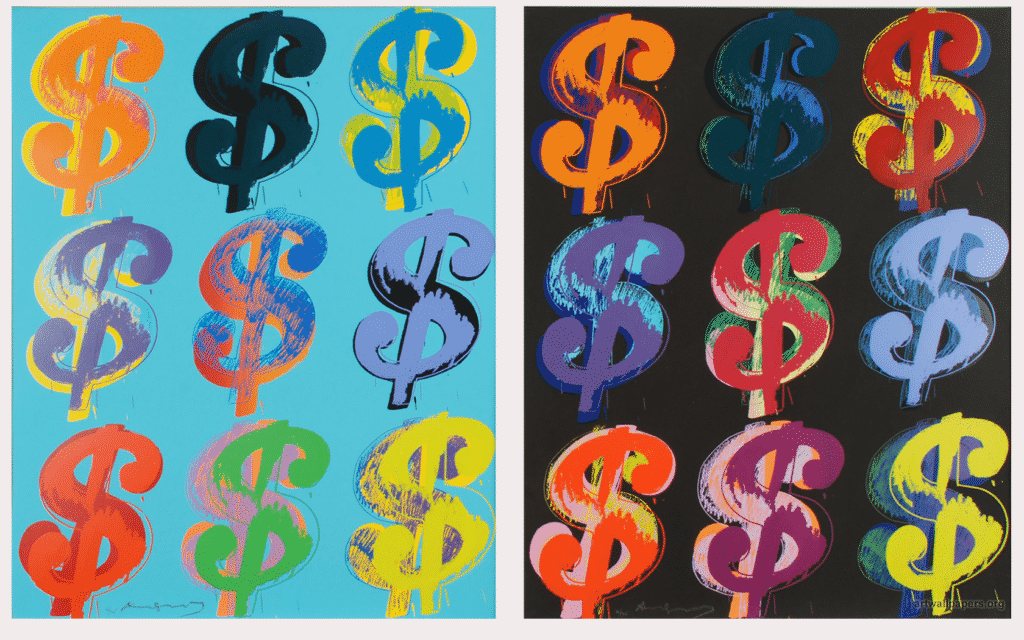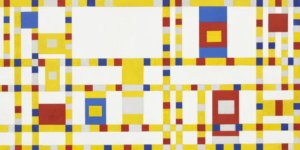One of the most complex tasks for emerging artists is most definitely deciding on a price. As art is primarily driven by creativity and emotions, switching to a more business-like type of thinking can pose a significant challenge and stress. However, you are not alone in this endeavor! As the title says, this will be the ultimate art pricing guide, regardless of the type of art you are creating.
What we will cover in this article will be all aspects of art pricing — starting from the kind of art you are selling and the value of your time and the initial investments to the potential markets. While it will not tell you “charge your artworks this much,” it will explain some of the relevant standards and teach you how to create prices applicable to you and your work. Additionally, you can look forward to some specific examples which might give you additional insight into the process!
Without further ado, let us start with:

What Are You Creating, And What Are Your Expenses?
To price your artwork, you first need to know what your initial investments are. As you might already know, contemporary art as a genre is one of the most diverse art movements due to modern and technological advancements in the recent years. Not only is it diverse, but it is also inclusive and cost-efficient! For example, a one-time investment in an iPad or an affordable digital camera, along with relevant programs and tools, can help an artist create and market those works for years to come. Nevertheless, the so-called “traditional” art forms persist and will be here for a long time as they have been for centuries. Whether it is oil and acrylic paint, watercolor, or any other fine art mediums, it still has an important place in this contemporary art world.
As of this moment in time, one of the most present and persistent divisions is between digital and traditional artwork. However, this is only when you are looking at the surface level. For example — graffiti and similar street art are still very present, but they wouldn’t fit in any of those two categories.
So — what are you creating? Keep in mind the tools you already have, as they are still an investment, albeit not direct and specific to the piece, and think about consumables such as oil paint thinner or paint itself. Make a note of it and ensure that you include them all in the final calculations.
Who Are The Potential Buyers And Competitors?
Unlike creating traditional art, selling it can be more analytical and technical — making it a bit easier to learn for a tech-savvy generation of artists. Therefore, before you start thinking about how much to charge for your art, you should research the market. That would include both the target customer base and the competitors. Doing that will allow you to tailor your rate(s) to the needs of the customer, which will, in turn, help you find someone to sell your art for what it is worth.
So, let’s start with audience research! From “simple” digital art commissions to general art collectors and auction houses, there are many types of people and places you can choose to be your target audience. A museum, an art gallery, an art dealer, or a collector can all be interested in your original artwork. You can also find niches for the specific kind of art you are creating — for example, abstract or figurative art — first online and go from there, personally connecting with the art collectors and art lovers.
If you are researching niches, you might also find and learn about your competitors — which saves you a lot of time in understanding the relevance and demand! Otherwise, you should probably explore both the internet — Google, Instagram hashtags, trending artists on other social media, such as Pinterest etc., as well as your local art communities — galleries, museums, or a local art fair. You can also look into any art-related publications on a regional or national level and use that information to learn about the intricacies of your local and nationwide art scene.

Why And How To Promote Your Art?
The logic itself is simple — the more people see your work, the more potential customers you will have. If you have money to invest in initial advertisements, it will most definitely pay off in the future, as more and more people learn about your work. Every social media platform, such as Facebook or Instagram, has an option for paid advertisements, and if you have a website, paid Google advertisements are a way to go! Additionally, you could hire someone to optimize your website and content to help your search engine ranking.
As far as organic promotion goes, social media is one of the most prominent and popular answers. It is smart to invest in advertisements and tailoring your profiles to the target market. Especially if you are, for example, a digital illustrator — this can be the most critical venue to explore and utilize. Additionally, websites are created solely for sharing art, such as DeviantArt, Pinterest, or ARTDEX. If you want to establish a strong presence on the internet, it is highly recommended that you look into them and start building the profiles, as it could be of great help in the future!
However, if you are creating physical art pieces, such as paintings, you should also research whether there’s an art gallery, auction house, or an art market nearby. Those places will give you a chance to showcase your art collection and connect with potential buyers and local collectors.
Additionally, creating a web portfolio to showcase your original art is a good idea for creating digital or physical artworks. It will make sure you always have your art portfolio just a click away. It might also serve as an excellent way to attract possible customers or an occasional art lover who will spread the word around.

How To Decide On A Price?
After covering most, if not all, factors that come into pricing artwork, the question remains — how do you price your art? Start by specifying what kind of artwork you are creating. Determining what exactly your work is will help you discern your target audience, how to promote your work, and, well — how to price it.
Next, there’s the time you put into that artwork. Keep in mind that your time is valuable, and the more time you have to put into creating a piece, the more value it will have. As a famous saying goes: remember that time is money!
Then comes the cost of materials used for creating the piece. Is it a drawing, a painting, a sculpture? Do you use acrylic paint, clay, oil paint? Depending on how expensive the materials used for creation are, the price will go up or down.
So, to put it simply, the pricing structure would look something like this: your hourly rate and the cost of materials, then miscellaneous things, such as shipping or printing = the price you will put on your art as a minimum.
The general way of pricing artwork will go like this:
- Your hourly rate: Decided by several factors — the area you live in or the area where your target audience is; your level of skill; and your experience.
- The cost of materials: If you are working digitally, this might not seem like an option, but you are still consuming electricity and maintaining your computer program while using your digital tools of choice, so there is an additional cost to creating digitally. For physical artwork, it is a bit more straightforward — as an artist, you will already have an ensemble of tools at your disposal, but you still had to make an initial investment. Take that into consideration, too, instead of counting only the materials you spent explicitly on the artwork created.
- Miscellaneous: Think about how much the advertisements cost you or renting a place to showcase your work. If you have an online store, think about how much it costs you to keep it going and account for the costs of packaging and shipping in the price.
Moreover, there is always a possibility of a client having a custom request. If you mention that as an option in a conversation with a customer or on your contact pages, it might lead to a quite lucrative endeavor. Those can include specific requests for which you can raise the rates, from asking for more people in the painting or a custom print of a work you have already done, to, for example, asking your permission to use your drawing as a tattoo, for which you can charge a commission fee. All in all, you can treat them as specific projects with their own rates, higher than the ones you have set for your regular work.
In the following sections, you will find a few specific examples of how to price your work and profit from it. Hopefully, this gives you a better idea of approaching your art and selling it for what it is worth.

An artist’s rendering of a Vincent van Gogh self-portrait as seen in the Immersive Van Gogh Exhibition in Toronto in May 2020. Credit: Show One Productions. | Image source: toronto.com
Digital Art
If you are doing digital art, you can divide it by tiers — for example, sketch, cell-shaded, or fully rendered, or by styles — comic, realistic, abstract, or photo manipulation. That will allow you to tailor the rate depending on the time and effort it takes to finish a piece in that format or style, and let your customers find something that will suit their tastes specifically.
Additionally, if you are creating digital art, setting up an online shop for posters, prints, and other physical versions of your works can be a supplementary income source. Particularly when you have managed to build a large following, people will want to have even pieces they did not commission in their possession. Sometimes, people will want some of the work you have created for yourself. They may ask for a chance to purchase it in different forms — maybe a print, a T-shirt, or even a pillowcase. The options are many, so make sure to make use of them to the best of your ability.
In case you are not sure how to set your shop up, there are marketplaces for print-on-demand products, which can be a great start if you’re an emerging artist!
Paintings
When it comes to painting, things can function somewhat differently. As those are actual physical products, there are several additional ways to price them, such as linear inch pricing. It is a simple and straightforward way to have consistent pricing for your work, regardless of its size and style, as all it takes into account are your piece’s dimensions. With it, you can have a different price for, e.g., an oil painting, an acrylic painting, or a watercolor painting while still keeping them consistent.
Some established artists also use square inch pricing while scaling down the price as the artwork’s size goes up. A direct example would be — an 8 x 8-inch painting would cost $6 per square inch, while a 15 x 15-inch painting would be $4 per square inch. It is also a suitable pricing method, but it is less straightforward than the aforementioned linear inch pricing, which might drive some customers off.
You can always stick to the hourly rate too, but it might put you at a disadvantage. Having an hourly wage after years of honing and perfecting your skills to the point where complicated pieces are not taking a long time to be finished is not ideal — but it is still an option.
Additionally — just as digital artists have the options of selling prints and posters, you can also do something similar: reproductions of your work in the form of giclee prints! They are produced using an inkjet printer, which is spraying color on the paper of your choice; while still being able to precisely apply ink — which results in high-quality prints of your original art. To make it easier to remember — giclee means “to spray” in French, and that’s precisely the way those printers function.

Photography
And to break the mold — let’s talk about photography. Anyone with a camera can take photos, while it takes skill to make them art. If you do have that skill — why not use it? After building an online portfolio, you would want to start taking thematic series of photos to collect images you can display in a gallery, whether it be a local or online one.
Again, the rate will depend on how much time and resources it took to take, edit and (possibly) print those photos. Think about the places you have visited to take the photos, how much time it took you to get the perfect shot. Then — about post-production: editing the lighting and bringing out the best in the pictures you took. And then, the costs of marketing, possibly — hosting a website, upkeep of your tools, and last but not least, the value of your time and skills. All of this comes into play when you are doing art photography, and you should take care to consider it all so you don’t undervalue yourself and your hard work.
However, as a photographer, you can support your creative endeavors by taking photos for stock websites. There, you won’t sell your work but hold a license for it to be used while retaining its copyright, and it holds infinite potential to support your creative career!
So – How Do I Do All Of This?
In conclusion, the simple formula would be — base price equals the cost of time, labor, and materials, along with the situation-specific costs. You can (and should) add the desired profit, which won’t be merely covering the cost of production: people usually add around 20% of the base price, but that is up to you, as that amount can be based on your research of the market and competitors. However, you don’t need to be a professional researcher or a market specialist to start your art business. At first, all you should do is focus on covering the costs, but then, as time passes and your creative career takes off, you can and should adjust your rates to reflect your talent fully.
So, what are you waiting for? Even if you were only thinking about trying to start a career in the arts, it is always good to be informed — and the fact that you are still reading this article means that you want to take the initiative and go for it. Whether it be today or a year from now, if you start right away, you will be on top of your game from the very start, and you can only benefit from that!
And you can start by registering at ARTDEX, as it is just the place an artist like you can use to archive and showcase your art digitally and connect with art collectors, dealers, and curators. Here, you can post your work, create collections of your own work as well as your favorite pieces and browse others’ collections to see what people are looking for!


![[Left] Kusama with her piece Dots Obsession, 2012, via AWARE, [Right] Yayoi Kusama (Courtesy Whitney Museum of American Art) | Source: thecollector.com](https://www.artdex.com/wp-content/uploads/2024/04/Left-Kusama-with-her-piece-Dots-Obsession-2012-via-AWARE-Right-Yayoi-Kusama-Courtesy-Whitney-Museum-of-American-Art-Source-thecollector.com--300x172.png)




